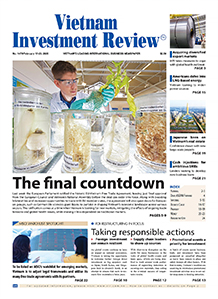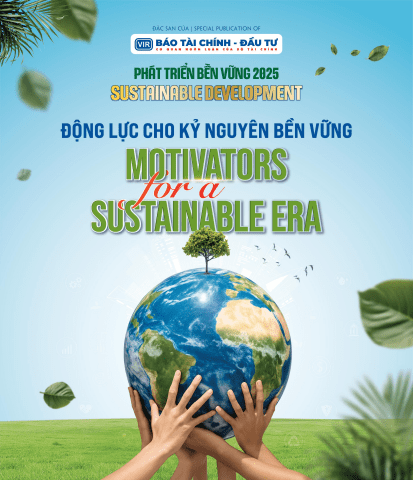Attaining climate justice with climate finance goals
The majority of greenhouse gas (GHG) emissions come from wealthier countries. Less affluent nations, with fewer factories, cars, and household appliances burning fossil fuels, historically have only contributed a small portion of the total emissions.
 |
| Nguyen Dinh Tho, vice president, Institute of Strategy and Policy on Agriculture and Environment, Ministry of Agriculture and Environment |
The United Nations Framework Convention on Climate Change in 1992 originally laid the foundation for climate justice: justice demands that those who have contributed more to the problem assume a greater responsibility for solving it, which is also an opportunity to access climate finance.
In 2009, developed countries agreed to mobilise $100 billion per year for developing countries to adapt to climate change and reduce GHG emissions, including bilateral and multilateral public climate finance and private finance mobilised by various mechanisms such as grants, loans, and even insurance.
In 2022, developed countries have achieved this goal for the first time, providing and mobilised $115.9 billion in climate finance for developing countries. However, only a small share of the total went to low-income countries, and only about a quarter to Africa. Loans made up the largest funding category, mainly going to middle-income countries.
In 2015, governments decided to set a new collective quantified goal on climate finance prior to 2025, amounting to at least $100 billion per year and taking into account the needs and priorities of developing countries.
The new goal will shift more towards urgent climate action in developing countries, supporting low-carbon solutions, climate resilience in energy, transportation, and agriculture; while allowing developing countries to enhance climate ambitions in the next round of national climate pledges, expected by the end of 2025.
Emerging markets and developing countries, excluding China, are estimated to need nearly $2.4 trillion annually by 2030 to achieve climate goals. This amount is four times the current investment level. Of this sum, around $1 trillion per year will come from international sources, both public and private.
According to the UN Environment Programme, countries may need up to $387 billion per year by 2030 and even more by 2050 to meet the requirements for climate change adaptation. Currently, this figure is only around $32-35 billion per year. This means that the financial needs for climate change adaptation are about 18 times higher than the current level.
Therefore, Vietnam needs to seize the opportunities from global climate finance and green finance to support green transformation, circular economy transition, and low-emission economic development.
Green finance for the green and digital transformation of businesses can be mobilised from multilateral and bilateral donors, governments, communities, non-governmental organisations, and central and local authorities.
In 2023, the European Union announced that all listed companies will be required to report on sustainable development. Europe established a carbon border adjustment mechanism (CBAM) starting from October that year, which apply to businesses in the sectors of iron and steel, aluminium, cement, chemical fertilisers, and electricity, hydrocarbons, and energy from 2026 onwards. These industries currently account for 94 per cent of emissions in Europe. As a result, Vietnamese businesses will be directly affected.
Many Vietnamese businesses are still unaware of the impact of the CBAM. It is mandatory for businesses to understand the current regulations and mechanisms of the EU as there is no longer a choice. This is also the only way for businesses to continue exporting goods to Europe and attracting European investors to Vietnam.
In addition to the CBAM, Europe has also implemented regulations on illegal, unreported, and unregulated fishing. Since 2017, the European Commission issued a yellow card warning against the Vietnamese seafood industry for such fishing. Starting from 2025, agricultural goods and products linked to deforestation or forest degradation from 2021 will not be allowed to enter the European market.
This regulation will also cover sectors such as textiles. With Vietnam importing 95 per cent of cotton from China, if there is deforestation involved, these products will not be exported to Europe.
Therefore, it can be seen that alongside the opportunities, Vietnam is facing numerous challenges in mobilising green finance.
Vietnam can engage in carbon credit trading to generate green finance. For example, the Tesla company earns $1.7 billion annually from selling carbon credits, while another company has to pay $2 billion each year for continuing to produce gasoline-powered vehicles.
In Vietnam, although the carbon credit market has not been established yet, Article 6 of the Paris Agreement allows countries to cooperate on emissions reductions by connecting domestic compliant carbon market with compliant carbon markets in other countries.
The carbon market in Vietnam will be established in 2025 and operational from 2029. Countries such as Europe, Canada, the US, New Zealand, Australia, India, China, Japan, and South Korea are all ready to purchase Vietnam’s carbon credits, even for reserve purposes.
What the stars mean:
★ Poor ★ ★ Promising ★★★ Good ★★★★ Very good ★★★★★ Exceptional
Related Contents
Latest News
More News
- Sustainability efforts on right track through policy and tech (December 03, 2025 | 12:05)
- Hanoi symposium highlights gender equality research and policy (December 03, 2025 | 12:00)
- The march to productivity and environmental sustainability (December 03, 2025 | 09:17)
- National cooling plan to support Vietnam’s net-zero goals (December 02, 2025 | 17:17)
- Vietnam advances ESG in finance while critical data gaps remain (December 02, 2025 | 17:10)
- Vietnam undergoes IAEA nuclear infrastructure assessment (December 02, 2025 | 16:49)
- Roadmap unveiled to tighten vehicle emission standards (November 29, 2025 | 09:00)
- Sustainable Development Conference 2025 recognises leaders in green growth (November 28, 2025 | 16:18)
- Nestlé and Vietnam strengthen cooperation to advance net zero goals (November 28, 2025 | 11:41)
- Technology and green finance emerge as twin pillars for Vietnam’s sustainable growth (November 28, 2025 | 10:52)

 Tag:
Tag:




















 Mobile Version
Mobile Version